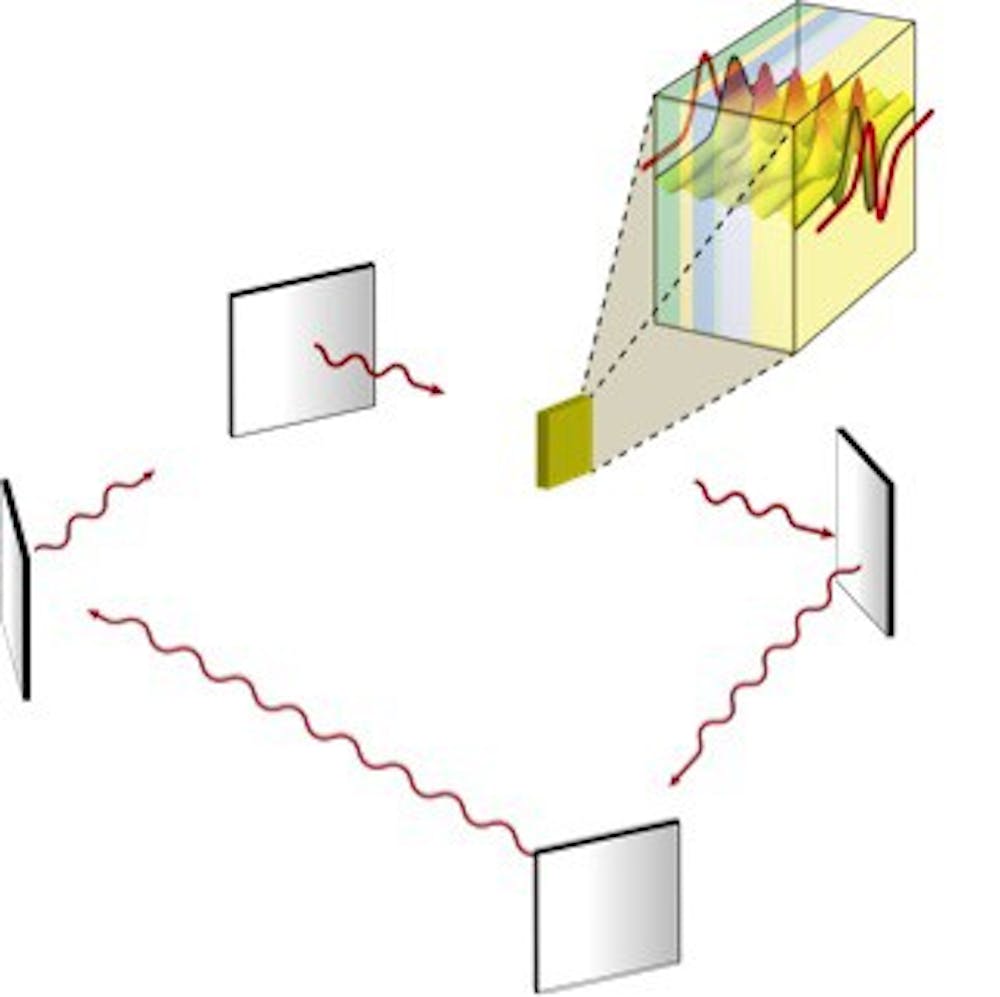
Metamaterials can be manipulated so that if light is shined through layers of them, a complicated math equation can be solved.
Credit: Courtesy of Nader EnghetaFor those set on sneaking into the nonexistent restricted section of Van Pelt Library late at night, electrical and systems engineering professor Nader Engheta is working with materials that can bend light in a manner reminiscent of an invisibility cloak straight out of Harry Potter.
Engheta works with materials known as metamaterials, which are engineered to have certain properties that are not currently found in nature. When these materials are manipulated, they can gain strange capabilities — like the ability to bend waves around an object, hiding that object from sight.
“You can write down the theoretical equations that show that you can bend light around an object,” said professor Mark Allen, director of the Singh Center of Nanotechnology. “Then what I would see is what’s behind you. To me you would look invisible.”
These metamaterials do not only work with waves of light — they have also been used to bend heat around objects and reduce the scattering of electrons, which could increase the efficiency of electronic devices.
“Waves are all around us — from radio stations, micro-ovens and light,” Engheta said. “We work with how to control these waves with materials and structures that might make them do something unusual.”
Some other applications for this technology could include blocking electromagnetic radiation and guiding cellphone tower signals.
However, this technology is not quite from a J.K. Rowling novel. It only works over a narrow range of light, which means that only light of a particular color shown from a particular direction can be bent. So if someone or something were to be invisible from the front, they would still be visible from the back.
Wharton Sophomore Luis De Castrois interested in the possible applications that these nanomaterials might offer.
“It makes me excited for the future,” said De Castro, who is also the captain of the Penn Quidditch team “Both scientifically, and the idea that things that are so clearly magic aren’t.”
Yet, Engheta's technology may never create a complete invisibility cloak because the daylight hours feature too many distinct wavelengths. Even so, his research may contribute to a more worldly application — he has recently been investigating how scattering light through metamaterials can solve complex mathematical equations.
“In the future, we might have a material such that, when you shine light through it, it could scatter into the derivative of a function,” Engheta said. “It would be like an optical calculator on the nanoscale.”
Engheta and his colleagues published this theory in Sciencelast January when it became a highlight in the optics field. They are now continuing with experimenting with the possibility of using metamaterials as a calculator.
The Daily Pennsylvanian is an independent, student-run newspaper. Please consider making a donation to support the coverage that shapes the University. Your generosity ensures a future of strong journalism at Penn.
DonatePlease note All comments are eligible for publication in The Daily Pennsylvanian.





